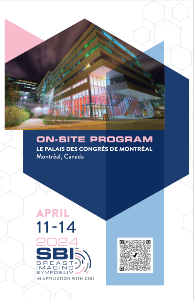Back
Session 1: Racial, Ethnic, and Language-based Disparities in Screening Mammography Technical Recalls
Friday, April 12, 2024
1:30 PM – 2:30 PM
Location: 510B

Madiha Aseem, MD
Breast Imaging Fellow
Massachusetts General Hospital
Massachusetts General Hospital/Harvard Teaching Hospital
Abstract Presenter(s)
Purpose: Screening mammograms (SMs) must consistently meet high-quality technical standards. Technical recalls (TRs) occur when SMs are technically inadequate for interpretation and repeat imaging is required. The need for patients to return for additional imaging following TRs has the potential to exacerbate access barriers for vulnerable groups. The purpose of this study is to investigate racial, ethnic, and language-based disparities in TRs and lengths of time to completion of additional imaging.
Materials and Methods: This IRB-approved, HIPAA-compliant, retrospective study included consecutive patients undergoing screening mammography between 1/1/2017-12/31/2019 at three screening sites within an academic medical center with at least one year of follow-up data. Demographics (including self-reported race, ethnicity, and primary language), mammography reports, and outcomes including TRs were extracted from the electronic medical record (Epic Systems, Verona WI). The proportion of TRs among SMs and lengths of time between TRs to completion of additional imaging were calculated. Timely completion of additional imaging was defined as within 60 days after TR, based on CDC National Breast and Cervical Cancer Early Detection Program standards.
Results: 119,822 SMs in 62,097 patients were performed (mean age 59.6 years at time of mammogram, SD 11.2). 71.6% (85,816/119,822) of mammograms were performed in White/Non-Hispanic (W/NH) patients and 26.8% (32,135/119,822) in races and ethnicities other than W/NH (non-W/NH). TRs were issued for 0.2% (206/119,822). There was no significant difference in proportion of non-W/NH patients in the overall cohort vs in the TR subset (25.2%, 52/206, P= .632). There was a significantly greater proportion of patients whose primary language was not English in the TR subset (13.1%, 27/206) vs overall cohort (7.7%, 9,280/119,822, P= .004). Among all TRs, 94.2% (194/206) of additional imaging was completed within 60 days. Additional imaging was completed within 60 days by a significantly greater proportion of W/NH patients (96.0%, 144/150) vs non-W/NH patients (88.5%, 46/52, P=.048), and by a significantly greater proportion of patients whose primary language was English (95.5%, 170/178) vs not-English (85.2%, 23/27, P= .033).
Conclusion: While TRs were uncommon at our institution, disparities existed based on race, ethnicity, and primary language. Patients with a primary language other than English were overrepresented among TRs. Following TRs, a lower proportion of non-W/NH patients and not-English users completed additional mammography within the suggested standard for timeliness of 60 days compared to White patients and English users.
Clinical Relevance Statement: Identifying and addressing racial, ethnic, and language-based disparities in TRs is necessary to ensure uniformly high SM technical quality for vulnerable populations.
Materials and Methods: This IRB-approved, HIPAA-compliant, retrospective study included consecutive patients undergoing screening mammography between 1/1/2017-12/31/2019 at three screening sites within an academic medical center with at least one year of follow-up data. Demographics (including self-reported race, ethnicity, and primary language), mammography reports, and outcomes including TRs were extracted from the electronic medical record (Epic Systems, Verona WI). The proportion of TRs among SMs and lengths of time between TRs to completion of additional imaging were calculated. Timely completion of additional imaging was defined as within 60 days after TR, based on CDC National Breast and Cervical Cancer Early Detection Program standards.
Results: 119,822 SMs in 62,097 patients were performed (mean age 59.6 years at time of mammogram, SD 11.2). 71.6% (85,816/119,822) of mammograms were performed in White/Non-Hispanic (W/NH) patients and 26.8% (32,135/119,822) in races and ethnicities other than W/NH (non-W/NH). TRs were issued for 0.2% (206/119,822). There was no significant difference in proportion of non-W/NH patients in the overall cohort vs in the TR subset (25.2%, 52/206, P= .632). There was a significantly greater proportion of patients whose primary language was not English in the TR subset (13.1%, 27/206) vs overall cohort (7.7%, 9,280/119,822, P= .004). Among all TRs, 94.2% (194/206) of additional imaging was completed within 60 days. Additional imaging was completed within 60 days by a significantly greater proportion of W/NH patients (96.0%, 144/150) vs non-W/NH patients (88.5%, 46/52, P=.048), and by a significantly greater proportion of patients whose primary language was English (95.5%, 170/178) vs not-English (85.2%, 23/27, P= .033).
Conclusion: While TRs were uncommon at our institution, disparities existed based on race, ethnicity, and primary language. Patients with a primary language other than English were overrepresented among TRs. Following TRs, a lower proportion of non-W/NH patients and not-English users completed additional mammography within the suggested standard for timeliness of 60 days compared to White patients and English users.
Clinical Relevance Statement: Identifying and addressing racial, ethnic, and language-based disparities in TRs is necessary to ensure uniformly high SM technical quality for vulnerable populations.

